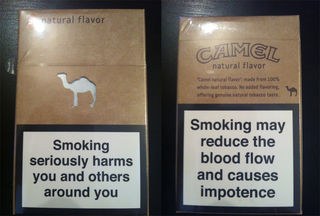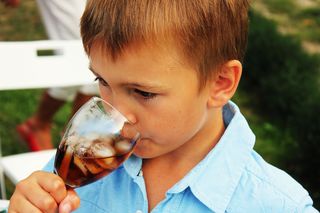Health
Should We Put Graphic Warning Labels on Sugary Drinks?
New research investigates how to reduce the consumption of sugary beverages.
Posted June 25, 2018
In a study in press in Psychological Science, Donnelly and colleagues at Harvard University discuss the effects of graphic warnings on the purchase of sugary drinks.1
Many people make unhealthy choices, but not always for the same reason. Sometimes we make bad choices because we lack information, and other times, because we lack self control. Only some of us constantly find it difficult to control our urges, but we all struggle with self-control under certain circumstances, such as when we are very hungry and are given access to fatty food or sweet beverages.
No matter why we make unhealthy choices, doing so can have serious consequences. For example, consumption of sugary beverages contributes to diabetes, obesity, and other serious health problems. And such serious consequences may be why some governments have recently proposed the use of warning labels on these types of drinks.
One method aimed at reducing unhealthy behaviors has been the use of calorie labels. The evidence for their effectiveness, however, has been mixed.
For example, in a 2013 study, Downs et al provided calorie recommendation information (e.g., the recommended calories per day or per meal) to a random subset of customers entering two McDonald’s restaurants in New York, to see if it would influence their eating habits. But the results showed that the information did not result in purchase of less calories.2

Could warning labels be more effective? Perhaps, especially as shown by the effectiveness of graphic warning labels (as opposed to text-only labels, as pictured here) for smoking cessation.3 See this link for a few examples of graphic warning labels for cigarettes.
So the question is: Could warning labels also work for sugary drinks? And secondly, would the public approve of them? That is what the researchers of the current study attempted to investigate, in a series of three studies.1
The first, a field study, took place in a hospital cafeteria in Massachusetts during a 14-week period. Sugary drinks were defined as those with more than 12g of sugar per container (100% juice and milk were excluded).
The text-only warning label was worded in the following way: “WARNING: Drinking beverages with added sugar(s) contributes to obesity, diabetes, and tooth decay.” The graphic warning label contained the same text but also evocative images: A mouth with some teeth missing and some decaying; the naked upper body of an obese person; and lastly, a picture showing insulin being injected into a person’s abdomen.
The results showed that the percentages of sugary beverages purchased during the calorie-label and text-warning-label intervention were not significantly different from those at the baseline. However, the graphic-warning-label intervention, in comparison with the baseline data, had resulted in a 15% reduction in purchase of sugary drinks.
In the second study, which was an online survey, the investigators examined the underlying psychological mechanisms responsible for effectiveness of the graphic-warning-label intervention. The participants were asked to imagine that they were about to purchase a drink.
In the control condition, the participants saw screens which showed the logo of their favorite drinks. In the experimental condition, the participants saw graphic labels. Following this, the participants answered some related questions.
The results revealed that those who had seen the graphic warnings had experienced more negative emotions, reported more health considerations, and felt more inclined to purchase water (instead of the sugary beverage).
This was taken as support for the hypothesis that graphic warning labels work by heightening and directing attention, thereby enhancing the consideration of the risks and the impacts of one’s choices.
The last study, another online survey, examined how the public feels about the use of graphic warning labels. The participants saw the three labels from the first study and were asked if they supported the use of each type of label on sugary drinks.
As expected, the support for the graphic label warning was lower than support for calorie label and text warning. However, when participants received accompanying information showing that only graphic warnings were effective in reducing the purchase of sugary drinks, the graphic warnings received as much support as did the other interventions.

Based on the findings of the three studies, Donnelly and colleagues concluded that only graphic warning labels reduced the percentage of sugary drinks purchased, and that the public may support the use of graphic labels if they are informed that only graphic labels are effective.
Noting that “A federal attempt to mandate graphic warning labels for cigarettes failed in part because of a lack of field evidence proving that graphic warnings were not ‘more extensive than necessary,’” the authors believe that their “findings may provide necessary evidence to implement graphic sugary-drink warning labels.”
Question for the readers: Would you support the use of graphic warning labels on sugar-sweetened beverages? Why or why not?
References
1. Donnelly, G. E., Zatz, L. Y., Svirsky, D., & Johnn, L. K. (in press). The Effect of graphic warnings on sugary-drink purchasing. Psychological Science. doi:10.1177/0956797618766361
2. Downs JS, Wisdom J, Wansink B, & Loewenstein G. (2013). Supplementing menu labeling with calorie recommendations to test for facilitation effects. American Journal of Public Health, 103, 1604–1609.
3. Hammond, D. (2011). Health warning messages on tobacco products: A review. Tobacco Control, 20, 327–337




